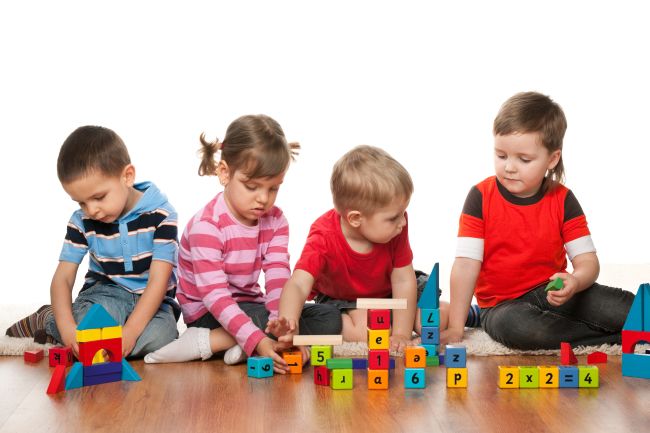Bullying: Children with Communication Disorders

The Scenario
Brandon is building a tower with the big blocks in the building centre of his Kindergarten classroom. Marisol is helping by holding the bottom of the tower as Brandon places each new block on top. Jeremy, who hasn’t yet settled on a specific activity, is wandering the classroom, stopping at each centre for a few moments and then moving on to the next. He sees Brandon’s tower reaching higher and higher and decides to join. He grabs a block to place on the top of the tower and Brandon protests by yelling, “No!” Jeremy reacts by kicking the tower and watching it topple on top of Brandon. He then throws the block he was about to place on the tower right at Brandon’s head. Marisol, stunned, stares at Jeremy, eyes wide and welling with tears.
This is not an unusual scenario for a Kindergarten classroom, as many teachers and Early Childhood Educators would confirm. As parents, you would likely label Jeremy as the ‘bully’ and Brandon and Marisol as the ‘victims’ in this scenario. You might be very protective of your victimized children in this situation and want to see the school adopt a ‘zero tolerance’ policy for bullying. You might even set up a time to talk to Jeremy’s parents, should the bullying continue or escalate.
But what if Jeremy were your son? You would likely feel shocked and dismayed by his behaviour and wonder why he would react so aggressively when he is usually so quiet and well-behaved at home. You might even feel embarrassed to approach the school or the parents of the other children, knowing that your son has been labelled ‘the bully’ of the classroom.
The Bully, the Bullied and the Bystander
Barbara Coloroso, child advocate, parenting expert and author, delved deeply into the topic of bullying in her book, “The Bully, the Bullied and the Bystander”. Within its pages, this author unravels the tangled and misunderstood roles of the ‘bully’ and his/her ‘victims’, and instead offers a viewpoint of a complex cycle, in which each role, the ‘bully’, the ‘bullied’ and the ‘bystander’, plays their part. ”
Bullying: Children with Communication Disorders
Now, imagine that your child with a communication disorder, is entering kindergarten for the first time. He/she may have difficulties in any one or all areas of communication. As parents you are likely even more anxious about your child’s reaction to this new environment, which can often be crowded, loud and overwhelming, resulting in your child feeling anxious, frustrated, and/or angry. Moreover, your child with a communication disorder may not have the incredibly complex set of communication skills needed to sit and listen at ‘carpet time’, produce work at ‘table top time’, and, most importantly negotiate and co-operate with his/her peers at ‘play/activity time’. Can you see how this confluence of factors can impact a child with a communication disorder to become embroiled in the ‘bully, bullied, bystander’ dynamic? A child with communication difficulties can easily take on any one of these roles.
The Bystander Role: How a Communication Disorder can Impact
Marisol, from our initial scenario, is the ‘bystander’. She witnesses what happens and feels afraid to confront the bully, or, sometimes even to console the ‘bullied’. A child with a communication disorder may become the ‘bystander’. In the midst of the situation, they may be overwhelmed with feelings of anxiety or fear, which impacts the ability to formulate language and use it appropriately. Furthermore, the bystander with a communication disorder may be unable to relate the situation to the teacher with any amount of accuracy or detail, increasing their feelings of shame and fear. These feelings are consistent in each role of the cycle. The bystander role can thereby easily change into the role of the ‘bullied’ or of the ‘bully’.
In part 2 of this blog, the roles of the ‘bullied’ and ‘bully’ will be covered and practical suggestions for parents will be offered!

Corina Murphy is a Speech-Language Pathologist who is excited to provide individualized and holistic intervention to children and their families and who is passionate and dedicated to helping children “understand and be understood.”